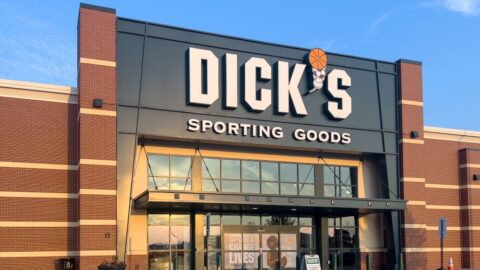The sudden departure announcements (two on the same day, Oct. 22) of three high-profile retail CEOs — Nike’s Mark Parker, Under Armour’s Kevin Plank and Gap’s Art Peck — highlight a surge in C-level turnover across multiple industries. Companies saw 151 chief executives leave their posts across all industries in October, a 14% increase over September and a 15% increase over October 2018, according to executive search firm Challenger, Gray & Christmas.
Retail in particular saw a greater than 50% increase this year: 47 CEOs departed between January and October, up from 30 during the same period in 2018. October alone saw seven departures, spiking from four in September. While there aren’t significant commonalities connecting the recent resignations, this number of shakeups implies that the companies are forcefully and publicly charting new courses.
“The CEO is this very visible, public-facing person,” said Deb Gabor, CEO and Founder of Sol Marketing in an interview with Retail TouchPoints. “Strongly encouraging them to leave on their own or dismissing them from their role is a statement the organization is making to its customers, its investors and its competitors — its entire ecosystem. It says, ‘We’re not going to put up with this anymore, and here’s our first step toward making whatever systemic changes are required to ensure the company is going to perform in accordance with our stated goals.’”
The Tech-Driven Future Calls For A New Generation Of CEOs
The removal of a CEO doesn’t necessarily herald a complete revamp for a struggling company — it may be a preemptive reaction to wider changes in the industry. Established CEOs with years of expertise in traditional environments may not be as suited to the future of retail as those with a more tech-savvy background, even if the company’s current performance is strong.
“Consumers are demanding a different relationship with their brands,” said Jono Bacon, CEO of Jono Bacon Consulting. “A, they expect simple, easy access to products, delivered quickly. And B, they want to use technology such as their phones, smartwatches and smart speakers to not just consume a product, but also have access to expertise, communities and other tools to support their success with the product. Supporting this changing relationship between consumers and brands is requiring businesses to become hybrid in nature — you can no longer just produce apparel, for example; you also need to be able to deliver compelling technology too. This is requiring a different set of skills, and arguably shifting requirements in a CEO.”
Demands for a more tech-savvy C-suite could explain the reason for Parker’s departure from Nike despite the company’s otherwise rosy outlook. While it is difficult to pinpoint an exact reason for the C-level shakeup, Nike may be looking for a chief executive with a background that better matches the company’s plans to carry its current momentum forward.
“Nike is clearly edging more and more into a technology-driven strategy (such as their acquisition of predictive analytics firm Celect),” said Bacon. “I suspect their 2020/2021 strategy will be focused on harnessing technology more and more to improve market placement and awareness, but also to produce and expand products that support their customers — such as wearable tech and online communities of Nike consumers. Parker may have not been the right person to lead this technology/product transition.”
CEOs Are More Than Leaders — They Are Public Figures
CEOs don’t just set the course for retailers internally. According to Gabor, they are a “living, breathing, walking billboard for a brand and the company behind it,” and thus playing a large role in determining public perception. Many retail leaders used to be faceless businessmen to the public at large, but modern consumers are more informed about the people heading up their favorite brands.
“One of the things that I’ve seen is that 10 years ago you couldn’t have found that many consumers who know who the CEO of a particular retailer or was,” said Gabor. “Now it’s increasingly common that people know names like Kevin Plank and Mark Parker off the top of their heads, because of the increased consumption of business media among everyday consumers.”
The departure of a top leader can provide a window for real change at a retailer, and an opportunity to clear the air surrounding their misfortunes — whether it’s the allegations of financial misfeasance at Under Armour or the steady decline of sales at many of Gap’s brands. Bringing in new leadership provides an opportunity to redefine the culture both internally and in the public eye.
“The culture of a company truly comes from the head down, and the removal of the CEO will likely have a huge impact on it,” said Colleen Madden Blumenfeld, Spokesperson for Challenger, Gray & Christmas. “This could be a positive, especially post-MeToo, as companies replace problematic leaders who were either engaged in misconduct or allowed misconduct to occur.”
CEO Transitions Are Costly And Can Precipitate Additional Departures
Every transition comes with a cost, and CEO departures can hit particularly hard: organizations spend an average of $136 million when a CEO departs suddenly, rather than having a planned retirement with an organized succession plan, according to a study in the International Journal of Financial Research. These transitions also can reverberate throughout the rest of the C-suite, particularly when combined with new goals or a fresh direction for the company as a whole. The departure of the CEO could be a prelude to reorganizing the entire C-suite.
“New CEOs like to pick their teams, so in many cases, after a departure, the rest of the C-suite may begin polishing their resumes,” said Blumenfeld. “The new CEO will likely assess the talent around him or her to see if changes need to be made to reach the company’s goals, especially since CEO compensation is so closely tied to company performance.”
While all three recent CEO shakeups will cast their shadows over the holiday season, it remains to be seen whether they will have a noticeable impact on these companies’ performances. The cost associated with losing a CEO isn’t necessarily amplified during the holidays.
“Any time of year where there’s some type of upheaval in the very senior ranks of an organization can have an impact on consumer confidence and the delivery of the brand promise to its customers,” said Gabor. “Different people making the top decisions can always impact what’s going to happen. Like I said, there are more and more regular, everyday consumers who are actually paying attention to what’s happening on Wall Street, so conceivably it could have some impact — but what that impact would be, I don’t know.”
Maintaining consistency will help all three brands ride out their transition periods without hurting their holiday sales. As long as the changes were carefully planned and cause minimal disruption for the average shopper, it is unlikely that they will generate unforeseen negative consequences for retailers.
“Losing a CEO at any busy time is not great, but I think what is more critical is that the operational elements of the business (such as getting products to market and delivering ongoing marketing campaigns) are consistent,” said Bacon. “Also, rarely when a CEO leaves do they completely vanish: there is almost certainly some hand-over occurring. I suspect these companies performed a cost/benefit analysis of the holidays versus making an executive change, and the timing was right. Rarely are these changes performed on a whim













